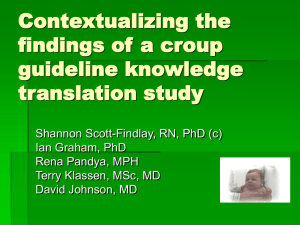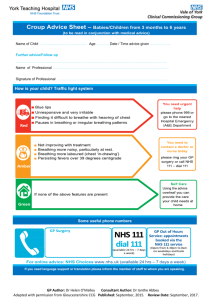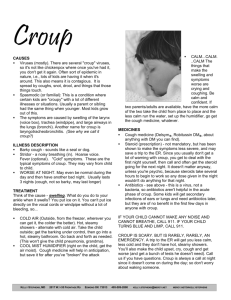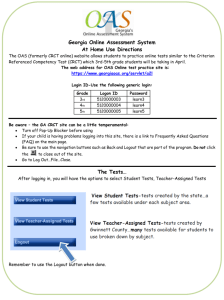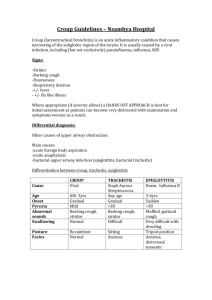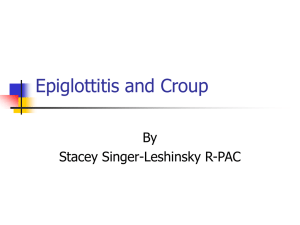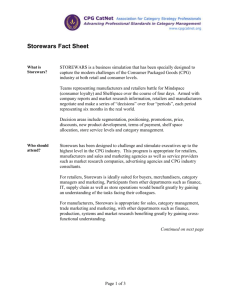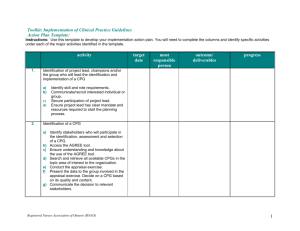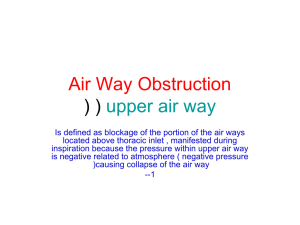Contextualizing the findings of a croup guideline knowledge translation study
advertisement
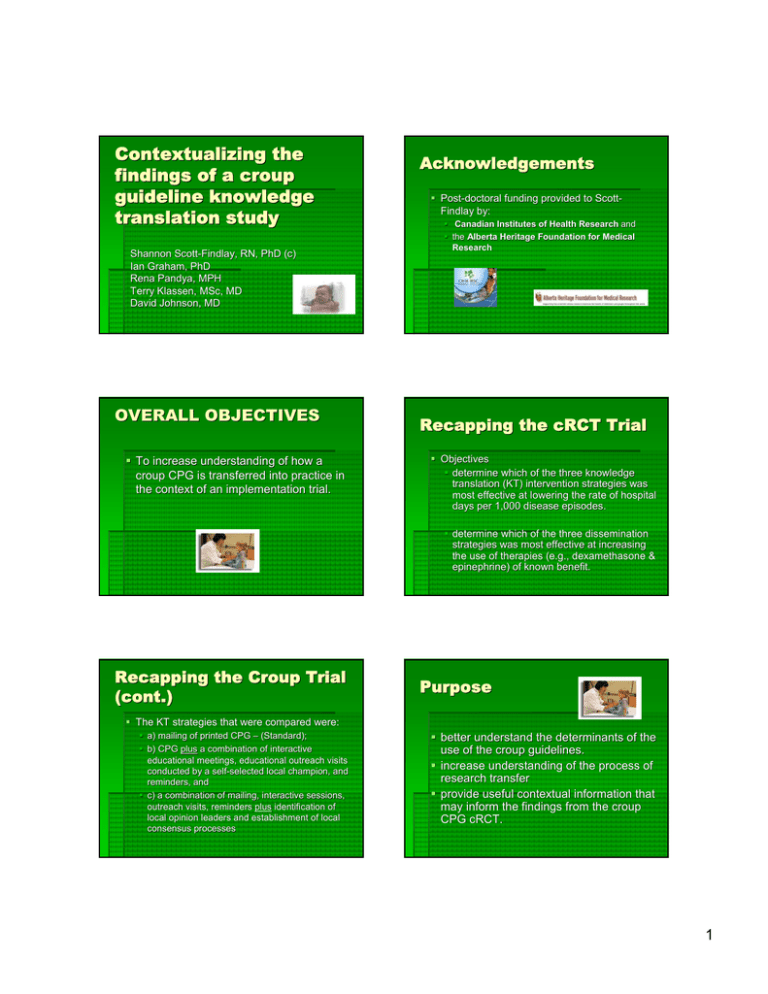
Contextualizing the findings of a croup guideline knowledge translation study Shannon ScottScott-Findlay, RN, PhD (c) Ian Graham, PhD Rena Pandya, Pandya, MPH Terry Klassen, Klassen, MSc, MSc, MD David Johnson, MD OVERALL OBJECTIVES To increase understanding of how a croup CPG is transferred into practice in the context of an implementation trial. Acknowledgements PostPost-doctoral funding provided to ScottScottFindlay by: Canadian Institutes of Health Research and the Alberta Heritage Foundation for Medical Research Recapping the cRCT Trial Objectives determine which of the three knowledge translation (KT) intervention strategies was most effective at lowering the rate of hospital days per 1,000 disease episodes. determine which of the three dissemination strategies was most effective at increasing the use of therapies (e.g., dexamethasone & epinephrine) of known benefit. Recapping the Croup Trial (cont.) Purpose The KT strategies that were compared were: a) mailing of printed CPG – (Standard); b) CPG plus a combination of interactive educational meetings, educational outreach visits conducted by a selfself-selected local champion, and reminders, and c) a combination of mailing, interactive sessions, outreach visits, reminders plus identification of local opinion leaders and establishment of local consensus processes better understand the determinants of the use of the croup guidelines. increase understanding of the process of research transfer provide useful contextual information that may inform the findings from the croup CPG cRCT. cRCT. 1 Theoretical Framework: Ottawa Model of Research Use Sampling Purposeful sampling 12 hospitals chosen in equal numbers from each of the three arms, Sampling based on: representation from both smaller and larger hospitals. representation from both poor and better performers ‘Maximizing variation’ variation’ Methods A qualitative case study research methodology (n=12) used to explore and describe the process of research use that occurred during the Croup cRCT. cRCT. Analysis Data collection and analysis proceeded concurrently Constant comparative approach (Glaser & Strauss) Phases: Coding Categorizing Developing themes Data collection Personal or telephone interviews with key informants and/or focus groups Review of policy documents related to institutional practices for treating croup Completion of a brief questionnaire on health care professionals’ professionals’ perceptions of the guideline and practice setting Findings Passive dissemination is not as effective as more active strategies Positive feedback about the guideline Simple guideline – easy to follow “it works” works” Guideline makes healthcare professionals’ professionals’ work more predictable as well as increase certainty for the parents Each hospital has different dynamics that shape how the CPG is implemented or not 2 Findings Focus on uniuni-disciplinary transfer is not effective Nurses are important facilitators in transferring information The need for consistent “up keep” keep” of education Findings Barriers nurses were not consistently involved in the process constant changes in staff composition Facilitator Standard orders CPG ‘works’ works’ and is easy to use Conclusions Increased knowledge was developed about how a CPG was transferred or not into practice Acquired a deeper and richer understanding of the barriers and supports to the uptake of a croup clinical practice guideline 3
